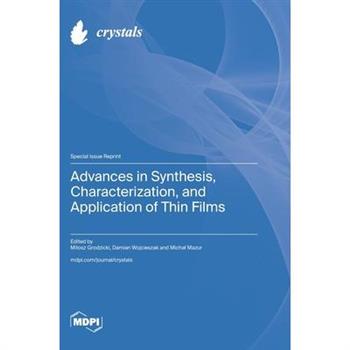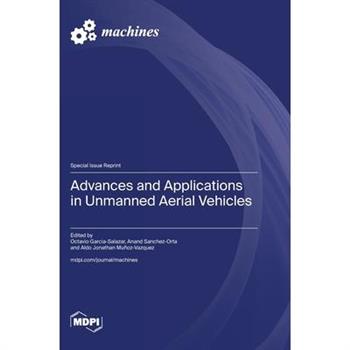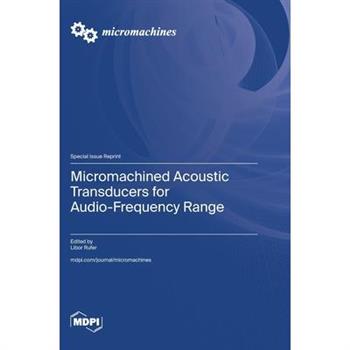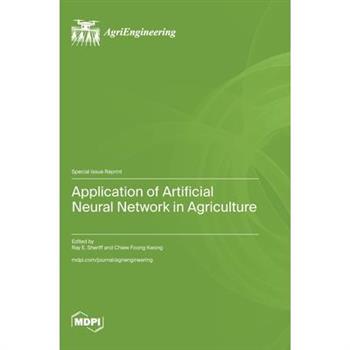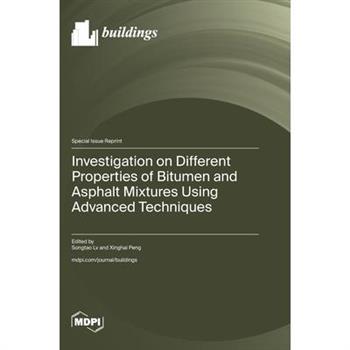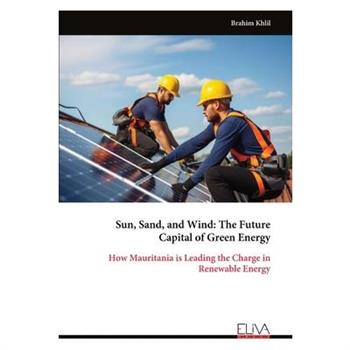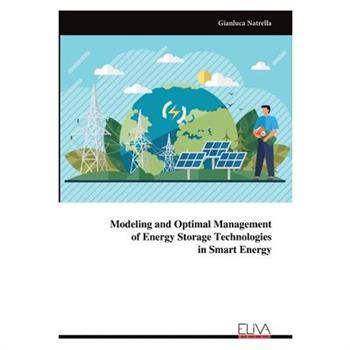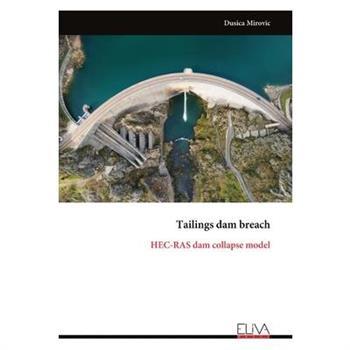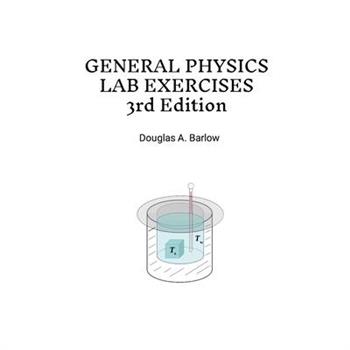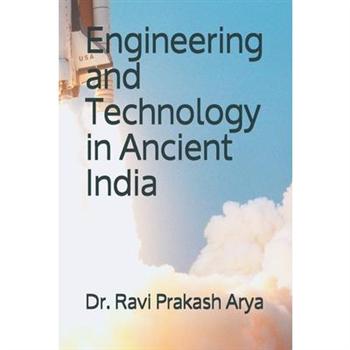Science and Power in the Nineteenth-Century Tasman World
Advances in Synthesis, Characterization, and Application of Thin Films
We are delighted to present the Special Issue titled "Advances in Synthesis, Characterization, and Application of Thin Films" in the Crystals journal. This collection highlights recent innovations and applications of thin films across diverse domains. The included papers provide both experimental and theoretical insights into thin film deposition techniques, including synthesis methods, structural properties, and their potential applications in various fields such as optoelectronics, energy conversion, and sensors.
Advances and Applications in Unmanned Aerial Vehicles
In the last decade, unmanned aerial vehicles (UAVs), commonly known as drones, have been used for different purposes, including applications such as search and rescue, highway patrol, and infrastructure inspections for power lines, bridges, and factories. These applications require UAVs that can operate under specific conditions or complex environments. As a result, new configurations are being developed, including improved sensors, longer flight times, and enhanced autonomy.This Special Issue provides the recent advances and applications in unmanned aerial vehicles, considering both theories and experiments for multirotor, fixed-wing, and non-conventional (convertible) vehicles. After a stringent peer review process, twelve papers were finally included in this Special Issue, which covers the following aspects: modeling, guidance, navigation, control, simulation, and applications.
Bionic Technology-Robotic Exoskeletons and Prostheses
Bionic technology and wearable robotics are transforming the landscape of assistive devices, offering new possibilities for rehabilitation and mobility enhancement. This Reprint brings together pioneering research on robotic exoskeletons and prostheses, showcasing advancements in design, control, and user interaction. With contributions from experts in biomechanics, neuroscience, and engineering, this collection explores innovative solutions that bridge the gap between human intention and robotic assistance. Topics included in this Reprint are as follows: intuitive control mechanisms, multimodal user interactions, and the optimization of assistive devices for real-world applications.By addressing critical challenges such as weight reduction, power efficiency, and seamless cognitive integration, this Reprint highlights the latest breakthroughs in biomechatronics and rehabilitation robotics. Researchers, engineers, and healthcare professionals will find valuable insights into the development of cutting-edge assistive technologies that enhance mobility and quality of life for individuals with disabilities.This comprehensive compilation serves as an essential resource for those dedicated to advancing the field of bionic technology and shaping the future of wearable robotics.
Customer-Centric Design
This book presents a cutting-edge customer-centric design approach, equipping readers with specific tools to effectively analyze customer needs and develop top-tier designs while taking pricing and competition into account. The meticulously chosen tools, rigorously tested by the authors, are derived from Quality Function Deployment (QFD), a proven method with a 50-year track record of successful implementation across various industry sectors.Customer Centric Design: Based on QFD Principles introduces a contemporary guide to the design principles of Blitz QFD(R), a groundbreaking methodology developed by the QFD Institute over 25 years. This book is crafted to optimize customer processes, leading to heightened success and increased business opportunities. By tackling customer concerns and concentrating on top-line revenue growth through the sale of high-value goods and services, the book offers a strategic approach to business development. Additionally, it focuses on the fundamentals of QFD prioritization, including the analytic hierarchy process (AHP), enabling more precise measurement of customer priorities and critical design decisions. Moreover, the book is compliant with the new ISO 16355 for QFD standard, ensuring that it aligns with the latest industry requirements. Relevant references will also be provided for further exploration.Product managers, engineers, and technologists will find this book particularly valuable, as it offers user-friendly methods and tools for validating marketing requirements and conducting market studies independently, as well as strategies to efficiently use these tools within tight time constraints.
Blockchain for the Modern Enterprise
Introduction to Theory of Computation
Theory of Computation is a branch of Computer Science and Engineering mostly a theoretical subject . Theory of Computation gives us the knowledge of how a language can be formed and how an abstract machine can be designed.So we need to know Deterministic Finite Automata where we can how the states are connected to each other.Regular language give us knowledge how a grammer is responsible to design a language and identify each letter. There many others things to be discussed.
The effectiveness of the smart board
Customer-Centric Design
This book presents a cutting-edge customer-centric design approach, equipping readers with specific tools to effectively analyze customer needs and develop top-tier designs while taking pricing and competition into account. The meticulously chosen tools, rigorously tested by the authors, are derived from Quality Function Deployment (QFD), a proven method with a 50-year track record of successful implementation across various industry sectors.Customer Centric Design: Based on QFD Principles introduces a contemporary guide to the design principles of Blitz QFD(R), a groundbreaking methodology developed by the QFD Institute over 25 years. This book is crafted to optimize customer processes, leading to heightened success and increased business opportunities. By tackling customer concerns and concentrating on top-line revenue growth through the sale of high-value goods and services, the book offers a strategic approach to business development. Additionally, it focuses on the fundamentals of QFD prioritization, including the analytic hierarchy process (AHP), enabling more precise measurement of customer priorities and critical design decisions. Moreover, the book is compliant with the new ISO 16355 for QFD standard, ensuring that it aligns with the latest industry requirements. Relevant references will also be provided for further exploration.Product managers, engineers, and technologists will find this book particularly valuable, as it offers user-friendly methods and tools for validating marketing requirements and conducting market studies independently, as well as strategies to efficiently use these tools within tight time constraints.
Micromachined Acoustic Transducers for Audio-Frequency Range
Microelectromechanical systems (MEMSs) and acoustics have become inseparable disciplines. MEMS microphones have become one of the most successful commercial products in the history of microsystem technology. In recent years, MEMS speakers have garnered significant interest from both research and industry.This Special Issue is dedicated to showcasing works on micromachined acoustic transducers for the audio-frequency range and providing a state-of-the-art overview of this dynamic field as it pertains to audio applications.The articles in this Special Issue cover a range of topics within the domain of MEMS acoustic devices, including microphones, speakers, and hearing aids. They address key research questions related to the design, modeling, evaluation, and applications of these devices. The diverse origins of the contributing authors-from industry, academia, and research institutions-bring a multidisciplinary perspective that ensures a comprehensive and balanced exploration of the field. This diversity also guarantees the practical relevance and scientific rigor of the presented works, offering valuable insights for researchers and engineers alike.
Application of Artificial Neural Network in Agriculture
With the need for farming to become more efficient and environmentally sustainable to meet the demands of a growing global population, the application of artificial neural networks (ANNs) to inform and enhance agricultural practice and production is gathering momentum and interest.This Reprint titled "Application of Artificial Neural Network in Agriculture" showcases fourteen high-quality research articles highlighting the use of ANNs and related technologies for pest detection, plant disease detection, nutritional monitoring and prediction, the classification of the phenology of beans, and the optimisation of egg production. We also present how ANNs may be used for predicting the power requirements of agricultural machinery and for dynamic behaviour forecasting of an indirect solar dryer.The multidisciplinary nature of the articles presented will likely strongly appeal to researchers and scientists working in the areas of agricultural technology, communications engineering, computer science, data analytics, electronic engineering, information technology, image processing, and mathematical modelling.
Investigation on Different Properties of Bitumen and Asphalt Mixtures Using Advanced Techniques
Asphalt pavement has been subjected to the alternating and coupling effects of traffic load, water, light, heat, ice, and snow for a long time. The viscoelastic-plastic properties of bitumen make it susceptible to load changes and humid and hot environments, seriously affecting its service life and level of service, until losing its essential functions. On the one hand, how to use advanced techniques to reveal the material and structural characteristics and performance evolution mechanism of asphalt mixtures under complex service conditions is a critical scientific issue. On the other hand, it is crucial to utilize the advanced technology to enhance the resistance ability of bitumen and asphalt mixtures to complex service conditions. This Special Issue aims to use different advanced techniques to characterize and improve the other properties of bitumen and asphalt mixtures at multiple scales, including characterization techniques such as microstructure characterization, phase analysis, composition analysis, thermal performance, functional application and mechanical performance of traditional or multi-functional asphalt mixtures.
Road Extraction and Distress Assessment by Spaceborne, Airborne and Terrestrial Platforms
This reprint focuses on the applied research on remote sensing technologies for road monitoring and extraction. Innovative and multidisciplinary approaches on road distress assessment using spaceborne, aerial, and terrestrial platforms, in different experimental surroundings, have garnered interest and need to be included more in regular road maintenance surveys.The development of high-performance technologies, such as Very High-Resolution Satellite Imagery and Unmanned Aircraft Systems, are promising to achieve extraordinary results, and the development of standardized methodologies is focal for integration with standard field surveys and reference legislation.Special attention is given to spaceborne, airborne, and terrestrial platforms, UAV and UGV, Pavement Management Systems (PMS), GIS modeling for management plan, AI, deep learning, data fusion, geomatics, Ground Penetrating Radar (GPR), LiDAR, and laser scanning, among others.
Database Design with C Programming Language, Data Structures and DBMS
Data Storage is a big part of computer science and technology right now.How can be data store in a minimum space complexity and time complexity.We need to write programe accordingly data can be structured and data structures are followed by algorithm we use. Then after learning the data structures we need to know how does this can represented as an usefulness of Database Management System. Combining all we can come across a part of discussion of Data storage by Programming Language, Data Structures and DBMS.
Why the Hindenburg Had a Smoking Lounge
Essays by international bestselling author Edward Tenner that explore both the negative and positive surprises of human ingenuity How did the addition of lifeboats after the Titanic shipwreck contribute to another tragedy in Chicago harbor three years later? How efficient are wild animals as investors, and how do dog breeds become national symbols? Why have scientific breakthroughs so often originated in the study of shadows? How did the file card prepare scholarship and commerce for the rise of electronic data processing, and why did the visual metaphor of the tab survive into today's graphic interfaces? Why have Amish artisans played an important role in manufacturing advanced technology? Why was United Shoe Machinery the Microsoft of the 1890s? Surprises like these, Edward Tenner believes, can help us deal with the technological issues that confront us now. Since the 1980s, Edward Tenner has contributed essays on technology, design, and culture to leading magazines, newspapers, and professional journals, and has been interviewed on subjects ranging from medical ethics to typography. Why the Hindenburg Had a Smoking Lounge--named for one of the paradoxes that can result from the inherent contradictions between consumer safety and product marketing--brings many of Tenner's essays together into one volume for the first time, accompanied by new introductions by the author on the theme of each work. As an independent historian and public speaker, Tenner has spent his career deploying concepts from economics, engineering, psychology, science, and sociology, to explore both the negative and positive surprises of human ingenuity.
Engineering and Technology in Ancient India
India is credited with highly advance knowledge system since ancient times. Vedas and post Vedic literature composed in Sanskrit has been the storehouse of various branches of knowledge on science, spirituality, philosophy, culture, civilization, economy, polity, law and management, ayurveda, yoga, pharmacy. This knowledge was documented from time to time and carried forward for future generations until the mass scale destruction of Sanskrit manuscripts to plunder and loot and devastation of libraries of Nalanda, Takshshila, Vikramshila and Ujjain. It is also a fact that intellectual tradition of India has been subjected to utter neglect and stagnation and so there is an absence of Indian accounts in academic texts of India. As such, there is an ardent need to initiate a process to unlock these systems of knowledge currently atrophied due to centuries of neglect and stagnation. In view of the above, the present study was undertaken. This work is a humble attempt to apprise the readers about the advancement of Engineering and Technology in Ancient India in various fields. Hope the students and scholars will find this books equally interesting and useful in their academics pursuits in Anceint Indian Civilizational Knowledge System.
Database Management System With GATE Questions
Database Management System is very useful for Engineering Students basically CSE and IT students.If more accurate way trying to say then DBMS is required for every field; as examples we can DBMS is useful for School Data Management, Banking Sector, Hospital Database and many others fields. Now we are discussing every point of This subject in India GATE is a vital examination.For this DBMS is an essential subject, so we not only discussing DBMS but also SQL Codes and related world' one of most difficult examination.
Cold pre-mixed flexible sidewalk with added tire rubber
A Complete Reference of Computer Science and Engineering Volume One
Computer Science and Engineering is a very good department to get admission and know the subject very well. Now computer is not a black box. It have input system and output system.In between there are many things to know like C Programming Language helps us to write code. Data Structures let us know how data can be arranged and manages, manipulated, searching, shorting traversing etc. In this book by JAVA we have designed Data Structures. Operating System designed in JAVA, Digital Electronics designed in Verilog HDL. All the mentioned subjects are discussed properly.
Lithium-Ion Cells
A large quantity of articles and books have been published on the designated topics. However, most of the literary sources describe the results of scientific articles on the synthesis and study of perspective materials; reveal circuit and design solutions for constructing control systems and manufacturing batteries; and are educational materials. At the same time, a small part of the published sources includes the following: descriptions of materials produced industrially and used in the LIC manufacturing process; demonstrations of the industrially produced LIC energy and power parameters; analysis of the characteristics of manufactured miniature lithium-ion cells, solid-state LICs, lithium metal cells, and all-solid-state cells; as well as others. Considering the popularity of the discussed topics, one can hope to find detailed information on the Internet. Indeed, modern search engines make it possible to locate a sufficiently large number of relevant documents. However, while conducting such research, we encountered the following challenges: the data are somewhat fragmented, and their systematization and structuring are required; search results do not always meet search queries. For instance, data that were relevant to the topic were found, but they did not match the query; as accumulated data grow, the search time for new information extends; the choice of search engine and location (different countries) affects search results; the data are not indexed in search engines, although the correct keywords and website were requested; the information disappears due to website updates; and the found data require additional processing. For example, many presentations show changes in the shape of the discharge curves depending on the discharge current strength. In addition, however, Ragone plots are necessary for a correct comparison, and therefore, the mathematical processing of presented results is required. Thus, this book was written to systematize and structure information on industrially produced materials for LIC manufacturing and industrially produced and promising LICs (and lithium metal rechargeable cells) for various applications.
Thinking Through Science and Technology
Groundbreaking in its range of disciplines and cultural backgrounds, Thinking through Science and Technology explores how individual and societal beliefs, values, and actions are transformed by science, technology, and engineering. Practical and theoretical insights from philosophers, policymakers, STS scholars, and engineers illuminate the promise, perils, and paradoxes that arise with technoscientific change. This collection of original research develops a philosophical understanding of technology and its inscription in a wider web of social and political meanings, values, and civilizational change. It explores foundational beliefs at the core of engineering education and practice, with an emphasis on the movement of ideas between Western and Chinese scholars, as well as the complex interwoven relationship between ideas from religion, science, and technology as they have evolved in the West. Contributors also critically examine the forces and frameworks that shape the development and evaluation of scientific practice and the innovation and adoption of technology, with an emphasis on national and global policy. The volume offers a critical and timely reflection on science and technology that counters trends toward technological optimism, on the one hand, and disciplinary and cultural regionalization, on the other. Chapters written by prominent and promising scholars from around the world make this a global resource; its breadth and clarity make it a superb introduction for those new to its fields. It serves as an essential reference for established scholars as well as anyone seeking a more comprehensive understanding of social and technoscientific entanglements that permeate contemporary life. List of contributors: Gordon Akon-Yamga, Jennifer Karns Alexander, Andoni Alonso, Pamela Andanda, Larry Arnhart, Li Bocong, Albert Borgmann, Adam Briggle, Jose A. L籀pez Cerezo, Mark Coeckelbergh, Daniel C矇r矇zuelle, Neelke Doorn, Jean-Pierre Dupuy, Andrew Feenberg, Jose Lu穩s Garcia, Tricia Glazebrook, Janna van Grunsven, J. Britt Holbrook, Helena Jer籀nimo, Tong LI, Yongmou LIU, Lavinia Marin, Glen Miller, Carl Mitcham, Suzanne Moon, Byron Newberry, Jean Robert, Sabine Roeser, Taylor Stone, Sajay Samuel, Daniel Sarewitz, Jen Schneider, Jos矇 Antonio Ullate, Carlos Verdugo-Serna, Nan WANG.
Technology in Mediterranean and European Lands, 600-1600
How medieval and Renaissance technology shaped Mediterranean and European society across a millennium.In Technology in Mediterranean and European Lands, 600-1600, Pamela O. Long explores the intricate web of technological advancements that shaped Mediterranean and European societies during the medieval and early modern periods. From the essential crafts of ploughing and tailoring to the sophisticated hydraulic systems and monumental building constructions, Long illuminates how ordinary people harnessed and transformed their world.Drawing on recent scholarship on environmental history and the history of technology--as well as materials, object biographies, and the circulation of objects--Long examines the circulation of ideas and technologies in Europe and the Mediterranean. The book covers the evolution of food production, transportation, and communication, as well as the crafting of pottery, weapons, and machines. This in-depth historical analysis shows how these technological advancements had profound social and economic impacts on everyday life. Long's meticulous research and engaging narrative bring to light the interconnectedness of various crafts and their contributions to the broader tapestry of human history. By integrating archaeological findings, historical texts, and modern scientific methods, the book offers an interdisciplinary perspective on the technological practices of the pre-modern world. Perfect for scholars, students, and history enthusiasts, Technology in Mediterranean and European Lands, 600-1600 emphasizes the ingenuity and resilience of past civilizations and the enduring legacy of technological innovation.
Advances in Structural and Mechanical Performances of Structures and Materials
The mechanical and structural performances of constructions are essential for ensuring the safety and well-being of society. Throughout their service lives, materials and structures are subjected to various demands, including dynamic loads such as earthquakes, wind, water, and soil pressure, as well as exposure to extreme conditions such as freeze-thaw cycles, corrosion, and heat. While these challenges vary by region, researchers and engineers worldwide continually strive to address the complex demands imposed by society.Recent advancements in construction engineering have significantly matured within specialized fields. However, alongside these developments, new challenges have emerged. The construction industry continues to face numerous unresolved issues that require innovative solutions. To encourage progress in this field, an integrated approach that combines various aspects of engineering and materials science is essential. With this vision, this current Special Issue focuses on uniting achievements in both structural and material engineering as a foundational step toward further advancements.This Special Issue showcases exceptional efforts aimed at addressing the aforementioned challenges. It includes 15 papers on topics spanning from materials science to structural engineering, covering a wide range of construction materials such as wood, concrete, and steel. The collective insights presented in this compilation provide valuable perspectives that can inspire future advancements for researchers and engineers worldwide.
Computer Design with Engg Math, DS & Design it’s OS & Architecture
Digital Computer Design is a very important task for Computer Science and Engineering Students.To design a Computer at first keep in mind it's a digital system at first we have to knowledge about digital electronics. Next Computer works with data and information. So data structures become a huge part of discussion as as well as data structures design is programming language. Digital system designed in Verilog HDL. Operating System is the core management of the computer, I have discussed here how do an Operating System can be developed.I have given idea of hardware also how they are inter connected to each other. Engineering Mathematics gives you the basic idea how the computation is being done. I have used C programming language and matlab.
The Rise and Fall of King Coal
A history of the dynamic role of coal in the energy landscape of the United States during the nineteenth and twentieth centuries.In The Rise and Fall of King Coal, Mark Aldrich explores the pivotal role of coal in the historical energy landscape of the United States. Meticulously researched and clearly written, this analysis of the rise, dominance, and eventual decline of coal as a primary fuel source traces its evolution from the late eighteenth century to the mid-twentieth century. Aldrich explains the factors that contributed to coal's ascendancy and decline, including efficiency, marketing, and the technological advancements that facilitated both its widespread adoption and later languishing. A complex interplay among market forces, government policies, and societal attitudes profoundly shaped the coal industry's trajectory. Challenges and controversies have surrounded the production of coal since its inception, including labor issues, environmental concerns, and resource scarcity. Aldrich's comprehensive approach--which combines historical analysis, economic perspectives, and a deep appreciation for the technological and scientific advancements that transformed the energy landscape--also emphasizes the role of innovation and entrepreneurship in driving energy transitions. By providing a bottom-up history that underscores the pivotal role of individual choices and market dynamics, The Rise and Fall of King Coal offers valuable insights into the dynamic nature of energy transitions. In lively discussions of domestic cooking and heating, Aldrich emphasizes the importance of women in shaping households' energy choices, and he gives voice to individual women and men as they describe how these decisions raised their standard of living. This book represents a seminal contribution to the field of energy history and highlights the complex interplay of factors that have shaped the evolution of energy use in the United States.
The Container Principle
A cultural history of the shipping container as a crucible of globalization and a cultural paradigm. We live in a world organized around the container. Standardized twenty- and forty-foot shipping containers carry material goods across oceans and over land; provide shelter, office space, and storage capacity; inspire films, novels, metaphors, and paradigms. Today, TEU (Twenty Foot Equivalent Unit, the official measurement for shipping containers) has become something like a global currency. A container ship, sailing under the flag of one country but owned by a corporation headquartered in another, carrying auto parts from Japan, frozen fish from Vietnam, and rubber ducks from China, offers a vivid representation of the increasing, world-is-flat globalization of the international economy. In The Container Principle, Alexander Klose investigates the principle of the container and its effect on the way we live and think. Klose explores a series of "container situations" in their historical, political, and cultural contexts. He examines the container as a time capsule, sometimes breaking loose and washing up onshore to display an inventory of artifacts of our culture. He explains the "Matryoshka principle," explores the history of land-water transport, and charts the three phases of container history. He examines the rise of logistics, the containerization of computing in the form of modularization and standardization, the architecture of container-like housing (citing both Le Corbusier and Malvina Reynolds's "Little Boxes"), and a range of artistic projects inspired by containers. Containerization, spreading from physical storage to organizational metaphors, Klose argues, signals a change in the fundamental order of thinking and things. It has become a principle.
Engineering Properties of Marine Soils and Offshore Foundations
In the field of ocean engineering, a thorough understanding of the geotechnical characteristics of marine soils and the engineering characteristics of foundation systems and offshore structures is crucial for guiding design, construction, and maintenance operations. In order to enable colleagues to better understand the current research status in the field of ocean engineering and stimulate their scientific research interests and inspiration, we selected a total of 15 scientific research papers on marine engineering foundation treatment, offshore structure foundations, offshore structure inspection and maintenance, and marine resource exploration and included them in this Special Issue for colleagues to read and refer to.






